#Future of electric vehicles in India
Explore tagged Tumblr posts
Text
Is India's Electric Vehicle Manufacturing Ecosystem Ready to Scale up Mass Adoption?
India is on the brink of a major shift in its automotive industry. Driven by the global and domestic push towards electric vehicles (EVs), the country’s EV manufacturing ecosystem is showing promise and ambitious growth projections. It shows a clear commitment to sustainable mobility. However, the road to mass adoption is fraught with challenges that need to be addressed if India is to fully capitalize on this opportunity.

Promising Growth Projections
The potential for growth in India’s EV market is enormous. By 2030, EVs could account for over 40 percent of the automotive market, generating a staggering USD 100 billion in revenue. The penetration rates are particularly impressive for two and three-wheelers, where EVs are expected to make up 80 percent of the market. Even for four-wheelers, the projection is significant, with a 50 percent market share anticipated by 2030. These numbers underscore the growing acceptance of EVs in India and the opportunity for the country to become a global leader in sustainable transportation.
Challenges Hindering Scalability
Despite the promising outlook, several hurdles stand in the way of scaling up EV manufacturing to meet mass adoption. These challenges must be addressed if India’s EV ecosystem is to realize its full potential.
High Ownership Costs: One of the most significant barriers to mass adoption is the high cost of owning an EV in India. This is primarily due to the limited charging infrastructure, which makes it difficult for consumers to rely on EVs for their daily commute. Additionally, there are deficits in battery cell production (20-25 percent) and semiconductor chips (40-50 percent), both of which are critical components for EV manufacturing. These shortages drive up the costs, making EVs less accessible to the average consumer.
Import Dependency: India’s reliance on imports for key EV components is another major challenge. Currently, 60-70 percent of battery cells, e-motor magnets, and electronics are sourced from China. Several lithium-ion battery manufacturing equipment suppliers in India are dependent on the import of cells and assembly equipment. This dependency not only creates supply chain vulnerabilities but also raises concerns about the sustainability of scaling up EV manufacturing. To reduce this reliance, India needs to invest in building local capacities for producing these critical components.
Scalability Issues in Local Manufacturing: While there are efforts to boost local manufacturing, many small enterprises in India are struggling to keep up with the growing demand for EV components. These scalability issues are exacerbated by a fragmented supply chain, where small and medium enterprises (SMEs) face coordination challenges that can lead to delays in production and distribution. This fragmentation hinders the efficiency of the entire EV ecosystem.
Lack of Standardization: Another significant challenge is the lack of standardization in EV manufacturing, particularly in battery specifications. This lack of uniformity complicates component sourcing and integration, making it difficult for manufacturers to scale up production quickly and efficiently. Standardization is crucial for streamlining the manufacturing process and ensuring that components are interchangeable and easily available.
Conclusion
India’s EV manufacturing ecosystem is at a critical juncture. While the growth potential is immense, several challenges must be addressed to scale up production and achieve mass adoption. By focusing on local manufacturing, expanding infrastructure, standardizing components, and supporting SMEs, India can overcome these hurdles and position itself as a global leader in electric mobility. The journey ahead is challenging, but with the right strategies and collaborations, India’s EV revolution is not just possible��it’s inevitable.
#India electric vehicle industry#EV manufacturing in India#Electric vehicle adoption in India#India's EV market growth#Sustainable transportation in India#EV infrastructure in India#Electric vehicle policy India#Mass adoption of EVs in India#Challenges in EV manufacturing#Future of electric vehicles in India#lithium-ion battery manufacturing equipment suppliers in India
0 notes
Text
Tata Tiago EV XE MR Review: Performance, Range & Efficiency Insights
₹7.99Lakh The Tata Tiago EV XE MR is a well-rounded electric vehicle (EV) that offers an attractive mix of performance, features, and practicality. Positioned in the entry-level EV segment, the Tiago EV XE MR is ideal for urban commuters looking for an affordable and eco-friendly car with the backing of modern technology and safety features. Below is a comprehensive analysis of this electric…
#Affordable Electric Cars in India#Affordable EV#Battery Powered Cars#Connected Car Technology#Electric Car Performance#Electric Car Range#Electric Car Safety#Electric Hatchbacks#Electric Vehicles#EV Charging#EV Features#EV for City Commuting#EV Reviews#Future of EVs.#Green Vehicles#Sustainable Transportation#Tata Motors EV#Tata Tiago EV#Tata Tiago XE MR#Urban Electric Cars
0 notes
Text
Automotive and Electric Vehicles future in india?
Image by freepik The future of the automotive and electric vehicle (EV) sector in India looks promising due to several factors driving growth and transformation: Government Policies and Incentives: The Indian government has introduced various policies and incentives to promote the adoption of EVs. Schemes like the Faster Adoption and Manufacturing of Hybrid and Electric Vehicles (FAME) aim to…

View On WordPress
#Automotive Innovation#Clean Energy#Electric Cars#Electric Vehicles#EV India#Future of Mobility#Green Transport#India EV Revolution#Smart Mobility#Sustainable Transport
0 notes
Text

ENGINEERING TOMORROW’S DELIVERIES, TODAY!!
In today’s digital era, e-commerce has revolutionized shopping habits, eliminating the need for physical store visits. This transformation underscores the rising dominance of online retail, facilitated by the convenience of smartphones and internet connectivity.
With the rise of e-commerce comes the crucial role of delivery agents and vehicles in ensuring timely and cost-effective product deliveries. As sustainability gains momentum, Electric Vehicles (EVs) emerge as the preferred clean mobility solution, aligning with the global shift towards eco-friendly practices.
FAME 3 – Faster Adoption and Manufacturing of Electric Vehicles in India Phase II.
This is a government scheme aimed at accelerating the adoption of electric vehicles (EVs) in India. It offers incentives for the purchase of electric two-wheelers, three-wheelers, and four-wheelers, making EVs more affordable for consumers. The scheme also focuses on developing charging infrastructure for EVs, including setting up charging stations in cities and along highways. This scheme also promotes battery-swapping technology, allowing EV users to swap out depleted batteries for fully charged ones quickly. All of this is done to create a more sustainable transportation sector for India, as well as a secure future for the environment we live in.
In the Interim budget of this year, the finance minister has allocated Rs 2671.33 crore for FAME III scheme but details of it are likely to be announced by the new government in the main budget in July 2024. It is almost a 44% cut from the allocation of FY 2023-24, but Industry expects the government will hike this amount in the main budget.
Read more at:
DIPLOS – the paradigm shift in hyper-local delivery EV technology:
Founded in 2020, Numeros Motors, headquartered in Bengaluru, has been dedicatedly engaged in research and development efforts to introduce innovative electric vehicles. Their purpose-built products are poised to revolutionize the EV landscape. The inaugural offering from Numeros Motors, Diplos pro, and Diplos i-pro, with its cutting-edge features and design, is specifically tailored to address issues plaguing electric vehicle adoption for last-mile deliveries.
Diplos takes the dual challenges of poor charging infrastructure and limited range per charge, head-on!
It boasts an impressive 140 km range, offering users the freedom to travel long distances without concerns about running out of power. Its innovative double-battery design enables continuous operation by allowing one battery to charge while the other powers the vehicle. Additionally, users can harness both batteries simultaneously for extended mileage, eliminating the need for frequent recharging.
Unlike other brands, Diplos is easy to own.
Diplos pro and Diplos i-pro present a highly affordable option, complemented by government subsidies dedicated to promoting EV adoption. With convenient finance options available, owning a vehicle has never been easier for customers.
Diplos does not compromise on rider comfort and safety.
This EV comes with dual disc brakes ensuring superior stopping power, wider seats for added comfort, and a robust front suspension for smooth, shock-free rides. Its extended wheelbase guarantees exceptional stability and handling.
Great news indeed, for all our delivery superheroes!
#automotive#electric vehicle#future mobility#sustainability#electric vehicles#diplos#numerosmotors#sustainable mobility#electric scooters#electric scooters in india
1 note
·
View note
Text
Electric Vehicles Future in India – Decoding The Evolution and Prospects
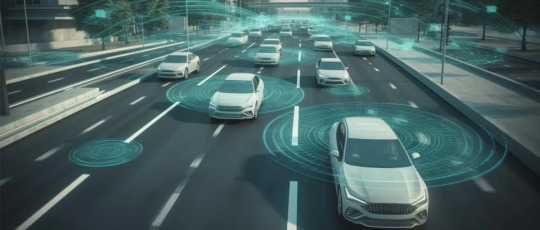
In the face of the global climate crisis, the embrace of electric vehicles (EVs) has taken center stage as an essential step towards achieving national emission targets and broader global climate objectives, including the crucial 1.5-degree Celsius limit. India, recognizing the urgency of the EV future, has embarked on an ambitious journey towards sustainability, with more than 50% of its states introducing EV-friendly policies to incentivize the transition to cleaner transportation.
The Roadmap for the Future: India envisions a future where EVs play a central role, aiming for a 30% penetration of EVs in passenger cars, 70% in commercial vehicles, and 80% in two and three-wheelers by 2030. This ambitious goal is propelled by major players in the automotive industry, actively championing the transition to renewable energy and exploring innovative solutions within the EV market.
Strides in EV Insulation: Innovation is thriving in the realm of EV insulation for batteries. Solutions are being developed to achieve higher voltages and longer ranges through efficient thermal management. Materials like tapes, films, solid epoxy insulating resins, and advanced cooling fillers, such as boron nitride, are employed to enhance thermal conductivity, improve performance, reliability, and reduce wastage.
Fresh Ceramic Inclusion: Ceramic fillers, particularly boron nitride, play a crucial role in advancing EV technology. These fillers enhance thermal conductivity and maintain electrical insulation, proving to be more thermally conductive and efficient than traditional counterparts. Innovations like hollow glass bubbles contribute to weight reduction, thermal insulation, and noise reduction in EV components.
Assembly Solutions for EV Batteries: Innovative bonding and joining solutions, including adhesives and battery sealants, simplify assembly processes, reduce costs, and enhance overall efficiency in EV battery manufacturing. These solutions represent a significant step forward in the evolution of electric vehicle technology.
Sustainability Initiatives: Sustainability is a fundamental pillar in the journey towards the EV future. Companies are actively engaged in creating sustainable products and solutions tailored for the evolving EV market, contributing to safer wastewater management and reducing the carbon footprint.
Modernizing Powertrains for EVs: Efforts are directed not only towards addressing battery concerns but also maximizing range through highly optimized powertrains. Innovations focus on minimizing motor size and weight, enhancing energy efficiency without compromising power, and improving the power density and efficiency of electric vehicle powertrains.
The Future of Electric Vehicles in India: India's EV market is on the brink of a remarkable transformation, with a projected compound annual growth rate of 49% between 2022 and 2030. The nation aims for 10 million annual EV sales by 2030, supported by a significant budget allocation for essential capital investments, steering the nation towards comprehensive energy transition and ambitious net-zero targets by 2070.
Conclusion: India's journey towards a cleaner and more sustainable EV future is underway. With a focus on sustainability and ambitious goals, the combined efforts of the government, industry, and innovators promise exponential growth in the EV ecosystem. Despite challenges, the trajectory is promising, offering a glimpse into a future where electric vehicles drive India towards a greener and more sustainable transportation landscape.
To read more, click here.
0 notes
Text
The Latest Trends and Technologies in India
Introduction:
India, with its rapidly growing economy and burgeoning tech industry, is witnessing a remarkable surge in innovative trends and cutting-edge technologies. From artificial intelligence and blockchain to renewable energy and digital transformation, India is embracing the future with open arms. In this article, we will explore the latest trends and technologies that are shaping various sectors in India and driving the nation towards a more prosperous and technologically advanced future.
Digital Transformation:
One of the most significant trends in India is the widespread adoption of digital transformation across industries. With the government's push towards a digital economy and initiatives like "Digital India," businesses and organizations are embracing technology to streamline operations and enhance customer experiences. E-commerce, online banking, and digital payments have become ubiquitous, enabling greater convenience and accessibility for the masses.
Artificial Intelligence (AI) and Machine Learning (ML):
India is making remarkable strides in the field of AI and ML. From chatbots and virtual assistants to predictive analytics and automation, AI is revolutionizing various sectors, including healthcare, finance, and manufacturing. Startups and tech giants alike are investing in AI research and development, making India a formidable player in the global AI landscape.
Internet of Things (IoT):
The Internet of Things is transforming the way people interact with everyday devices and objects. India's IoT market is expanding rapidly, enabling smart homes, connected vehicles, and smart city initiatives. mobile app development services in agriculture are also empowering farmers with real-time data and insights, enhancing productivity and sustainability.
Blockchain Technology:
Blockchain technology is gaining momentum in India, with numerous sectors exploring its potential. Fintech companies are leveraging blockchain for secure and transparent transactions, while supply chain management and healthcare are also benefiting from its immutable and decentralized nature. Government initiatives are exploring the use of blockchain for record-keeping and identity verification.
Renewable Energy:
India is committed to embracing renewable energy sources to combat climate change and reduce its dependence on fossil fuels. The country is a global leader in solar energy adoption, with ambitious targets for solar power capacity expansion. Wind energy and other renewable sources are also gaining traction, driving sustainable development in the energy sector.
5G Technology:
The rollout of 5G technology in India is highly anticipated. With its promise of ultra-fast internet speeds and low latency, 5G is expected to revolutionize communication, entertainment, and various industries. Telecom operators and tech companies are gearing up to deploy 5G networks, paving the way for a digitally connected future.
Electric Vehicles (EVs):
India is witnessing a surge in the adoption of electric vehicles as part of its efforts to reduce air pollution and promote sustainable transportation. The government's initiatives and incentives are encouraging the development and adoption of EVs across the country.
HealthTech and Telemedicine:
The COVID-19 pandemic accelerated the adoption of telemedicine and digital health solutions in India. HealthTech startups are providing remote healthcare services, teleconsultations, and health monitoring devices, making healthcare more accessible and efficient, especially in rural areas.
EdTech:
The EdTech sector is booming in India, especially after the pandemic-induced shift to online education. Online learning platforms and digital educational content are becoming increasingly popular, empowering students with personalized and accessible learning experiences.
Cybersecurity:
As digital adoption grows, so does the need for robust cybersecurity measures. India is investing in cybersecurity technologies and expertise to safeguard critical infrastructure, financial systems, and personal data.
Conclusion:
India's relentless pursuit of technological advancements is shaping its future as a digital powerhouse. The latest trends and technologies, such as digital transformation, AI, IoT, blockchain, and renewable energy, are driving innovation and progress across various sectors. With a strong focus on sustainability, inclusivity, and digital accessibility, India is poised to embrace the benefits of technology and make a significant impact on the global stage. As the nation continues to evolve and adapt to technological changes, it paves the way for a more prosperous and technologically advanced India.
#artificial intelligence#machine learning#cybersecurity#branding#health#electric vehicles in india#5g technology#blockchain#developer#ai#viral trends#viralpost#gamedev#coding#python#todaypost#india#technology#future trends#programming#healthtech#Digital Transformation#softwaredevelopment#automation#networking#mobile application development#software#flutter app development#web application development#web application security
1 note
·
View note
Text
Top 5 Electric Bikes in India: Embracing Sustainable and Thrilling Rides
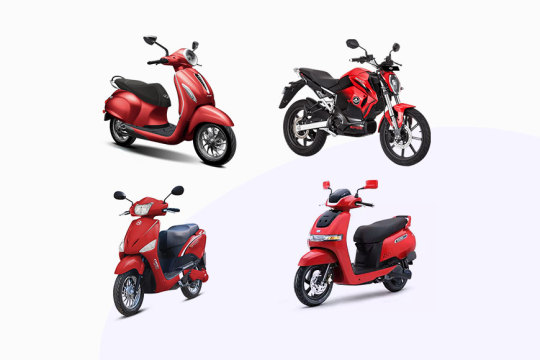
#Electric Bikes India#Eco Friendly Ride#Green Rides#Eco Friendly Transport#Electric Mobility#Sustainable Commute#Clean Energy Bikes#Future Of Transport#Go Electric#Zero Emissions#Electric Revolution#electric vehicles#electric bike#futuristic
0 notes
Text
https://eveium.in/booking.php
Our belief: an environment conscious customer is equally conscious about his investments in an EV. We aim to honor this by providing our users with all information transparently, emphasizing on our adhere to safety guidelines and strict quality protocols that build us. EVeium brings to you, smart mobility. Made in India. For India.
#sustainability#eveium#ev industry india#ev industry#ev scooter#electric scooter#electric vehicles#green energy#green future#batteries
0 notes
Text
Revving Up for Growth: Volkswagen Plans Major Expansion into India, Focusing on Electric SUVs!"
Volkswagen plans to revisit its strategy for India amid geopolitical uncertainty in China and sees India as a potential growth market. German automaker Volkswagen (VW) plans to revisit its strategy for the Indian market amid geopolitical uncertainty in China. VW sees India as a potential growth market and is considering expanding its product range, particularly in the SUV segment. The company…
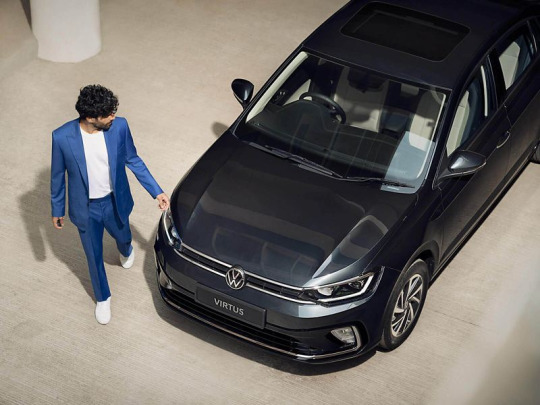
View On WordPress
#clean energy#Electric Vehicles#ev revolution#EVs#expansion#future of mobility#Green revolution#INDIA#sustainable transport#SUVs#Volkswagen
0 notes
Text
Excerpt from the Substack Distilled:
In the last few months, the Biden administration has quietly passed multiple federal policies that will transform the United States economy and wipe out billions of tons of future greenhouse gas emissions.
The new policies have received little attention outside of wonky climate circles. And that is a problem.
Earlier this year, I wrote that Biden has done more to mitigate climate change than any President before him. For decades, environmentalists tried and failed to convince lawmakers to pass even the most marginal climate policies. It wasn’t until Biden took office that the logjam broke and the climate policies flowed. And yet few American voters are hearing this story in an election year of huge consequence.
It’s been two and a half months since I wrote that article. In that short time, the Biden administration has passed a handful of climate policies that will collectively cut more than 10 billion tons of planet-warming pollution over the next three decades, more than the annual emissions of India, Russia, Japan, South Korea, Canada, Saudi Arabia, and the entire continent of Europe—combined.
One climate policy that flew under the radar recently was the administration's latest energy efficiency rule, unveiled at the beginning of May. The new rules will reduce the amount of energy that water heaters use by encouraging manufacturers to sell models with more efficient heat pump technology. The new regulation is expected to save more energy than any federal regulation in history.
Most people give little thought to how the water in their homes is heated, but water heaters are the second-largest consumer of energy in the average American home and one of the largest sources of climate pollution in the country.
A few days before the administration announced its water heater efficiency rules, the Environmental Protection Agency (EPA) announced another sweeping policy.
According to the new rules, existing coal power plants will need to either shut down or install carbon capture technology capable of removing 90% of their carbon pollution. The policy will also require any new natural gas power plants that provide baseload power—the ones that run throughout the day and night, as opposed to the peaker plants that only run for a small fraction of hours in the year—to install carbon capture technology.
The new power sector rules are effectively a death blow to coal power in America, which has slowly faded over the last two decades but still emits more carbon emissions than almost every country in the world.
The water heater rules and power plant regulations will help the country meet its goal of cutting emissions by 50% by 2030. But impactful as they will be, they weren’t the most important climate policy that the Biden administration passed in the last two months.
That honor goes to the EPA’s tailpipe rules, which are set to transform the auto industry over the next decade.
Today the transportation sector is the largest source of climate pollution in the United States. Within the sector, passenger cars and trucks are the biggest contributors to emissions. While electric vehicle adoption has grown in recent years, America lags behind many other countries in decarbonizing its vehicle stock.
The EPA’s new rules will force automakers to reduce the amount of pollution and carbon emissions that come from their vehicles. The federal policy doesn’t specifically mandate that automakers produce EVs or stop selling gas-powered cars but instead regulates the average carbon emissions per mile of a manufacturer's entire fleet over the next decade. That means automakers can still sell gas-guzzling, carbon-spewing trucks in 2035. They’ll just need to sell a lot more EVs or plug-in hybrids to bring their average fleet emissions down if they do.
Like the power plant rules, the EPA’s new auto regulations are designed to avoid being thrown out by a conservative and hostile Supreme Court.
128 notes
·
View notes
Text
RideBoom Revolutionizes Transportation with Innovative Solutions and Unmatched Convenience

RideBoom India is expanding its innovative ridesharing services to 20 more cities across India. Providing affordable, eco-friendly transportation options to the masses.
RideBoom, the leading transportation service provider, is proud to announce its commitment to revolutionizing the transportation industry with innovative solutions and unmatched convenience for riders and drivers alike.
Unmatched Convenience
RideBoom is dedicated to providing unmatched convenience compared to other transportation services. With the RideBoom app, users can easily book a car, taxi, or delivery service right from their mobile devices. The app connects users with nearby drivers or couriers, allowing them to get to their destination or receive their deliveries quickly and efficiently.
Innovative Solutions
RideBoom is constantly innovating to provide the best possible experience for its users. The company has recently expanded its Bike Taxi Service to additional cities, offering an eco-friendly and efficient mode of transportation for short-distance travel. RideBoom is also exploring the integration of electric vehicles into its fleet, demonstrating its commitment to sustainability and the EV revolution.
Commitment to Safety and Reliability
At the core of RideBoom's mission is a dedication to providing safe and reliable transportation services. The company has implemented stringent safety measures and training protocols to ensure that its drivers and couriers deliver a secure and comfortable experience for all users.
Transforming the Ride-Hailing Industry
RideBoom's innovative approach and unwavering commitment to customer satisfaction have positioned the company as a leader in the transportation industry. By continuously introducing new features and adapting to changing market conditions, RideBoom is redefining the way people and goods move, ultimately transforming the ride-hailing landscape.
"RideBoom is committed to revolutionizing the transportation industry and providing our users with the best possible experience," said the RideBoom founder. "We are excited to continue innovating and expanding our services to meet the evolving needs of our customers."
For more information about RideBoom India and its services, please visit https://rideboom.com/india/
About RideBoom India
RideBoom India is the leading ridesharing platform in the country, providing affordable, convenient, and eco-friendly transportation solutions to commuters across India. Founded in 2020, the company has experienced rapid growth and now operates in many cities, connecting passengers with a network of verified drivers. RideBoom India is committed to revolutionizing the way people commute and contributing to a more sustainable future.
#rideboom#delhi rideboom#biketaxi#ola cabs#uber driver#rideboom taxi app#rideboom app#uber taxi#uber#ola
46 notes
·
View notes
Text
Good Climate News: Headline Roundup April 1st through April 15th, 2023
Contrary to what you might expect, there's actually way more good climate news stories than I have time to post about individually. (Especially now that my health is better and I'm back to working more!) Which itself is fantastic news!
Some stories are big, some are small, but they all add up. All over the world, people are doing far more than we realize to help save the planet - and ourselves.
I'm posting this is mid-May bc I've gotten really behind on news posts, but trust me, there will be more roundups coming. And this is SO FAR from all the good climate news in April 2023. I may do weekly roundups in the future.
So, without further ado, some reasons to have hope, all from just April of 2023:
^Article date: 4/15/23
^Article date: 4/14/23. And to clarify, the cleanup will NOT be temporary, they are building infrastructure and changing laws for the long term.
^Article date: 4/13/23
^Article date: 4/12/23
^Article date: 4/10/23
^Article date: 4/12/23
^Article date: 4/11/23
^Article date: 4/8/23
^Article date: 4/5/23
More roundup posts to come!
#climate#sustainability#climate change#biodiversity#marshes#sparrows#india#united states#united kingdom#wales#france#senegal#madagascar#georgia#texas#milkweed#rivers#conservation#conservation news#water pollution#electric vehicles#reforestation#trees#good news#hope
208 notes
·
View notes
Text
World's Most Powerful Business Leaders: Insights from Visionaries Across the Globe
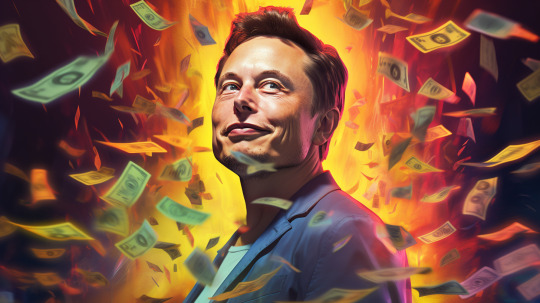
In the fast-evolving world of business and innovation, visionary leadership has become the cornerstone of driving global progress. Recently, Fortune magazine recognized the world's most powerful business leaders, acknowledging their transformative influence on industries, economies, and societies.
Among these extraordinary figures, Elon Musk emerged as the most powerful business leader, symbolizing the future of technological and entrepreneurial excellence.
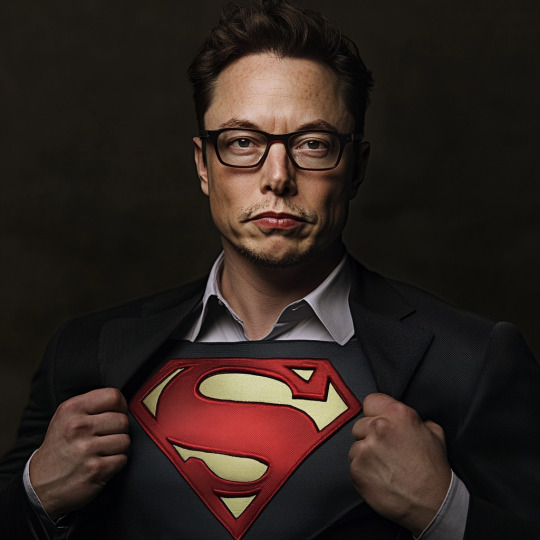
Elon Musk: The Game-Changer
Elon Musk, the CEO of Tesla, SpaceX, and X (formerly Twitter), has redefined innovation with his futuristic endeavors. From pioneering electric vehicles at Tesla to envisioning Mars colonization with SpaceX, Musk's revolutionary ideas continue to shape industries. Recognized as the most powerful business leader by Fortune, his ventures stand as a testament to what relentless ambition and innovation can achieve. Digital Fraud and Cybercrime: India Blocks 59,000 WhatsApp Accounts and 6.7 Lakh SIM Cards Also Read This....
Musk's influence extends beyond his corporate achievements. As a driver of artificial intelligence and space exploration, he inspires the next generation of leaders to push boundaries. His leadership exemplifies the power of daring to dream big and executing with precision.

Mukesh Ambani: The Indian Powerhouse
Mukesh Ambani, the chairman of Reliance Industries, represents the epitome of Indian business success. Ranked among the top 15 most powerful business leaders globally, Ambani has spearheaded transformative projects in telecommunications, retail, and energy, reshaping India's economic landscape. His relentless focus on innovation, particularly with Reliance Jio, has revolutionized the digital ecosystem in India.
Under his leadership, Reliance Industries has expanded its global footprint, setting new benchmarks in business growth and sustainability. Ambani’s vision reflects the critical role of emerging economies in shaping the global business narrative.

Defining Powerful Leadership
The criteria for identifying powerful business leaders are multifaceted. According to Fortune, leaders were evaluated based on six key metrics:
Business Scale: The size and impact of their ventures on a global level.
Innovation: Their ability to pioneer advancements that redefine industries.
Influence: How effectively they inspire others and create a lasting impact.
Trajectory: The journey of their career and the milestones achieved.
Business Health: Metrics like profitability, liquidity, and operational efficiency.
Global Impact: Their contribution to society and how their leadership addresses global challenges.
Elon Musk and Mukesh Ambani exemplify these qualities, demonstrating how strategic vision and innovative execution can create monumental change.

Other Global Icons in Leadership
The list of the world's most powerful business leaders features numerous iconic personalities, each excelling in their respective domains:
Satya Nadella (Microsoft): A transformative leader who has repositioned Microsoft as a cloud-computing leader, emphasizing customer-centric innovation.
Sundar Pichai (Alphabet/Google): A driving force behind Google’s expansion into artificial intelligence, cloud computing, and global digital services.
Jensen Huang (NVIDIA): The architect of the AI revolution, whose GPUs have become indispensable in AI-driven industries.
Tim Cook (Apple): Building on Steve Jobs' legacy, Cook has solidified Apple as a leader in innovation and user-centric design.
These leaders have shown that their influence isn’t confined to financial success alone; it extends to creating a better future for the world.
Leadership in Action: Driving Innovation and Progress
One common thread unites these leaders—their ability to drive innovation. For example:
Mary Barra (General Motors) is transforming the auto industry with her push toward electric vehicles, ensuring a sustainable future.
Sam Altman (OpenAI) leads advancements in artificial intelligence, shaping ethical AI practices with groundbreaking models like ChatGPT.
These visionaries have proven that impactful leadership is about staying ahead of trends, embracing challenges, and delivering solutions that inspire change.
The Indian Connection: Rising Global Influence
Apart from Mukesh Ambani, Indian-origin leaders such as Sundar Pichai and Satya Nadella have earned global recognition. Their ability to bridge cultural boundaries and lead multinational corporations demonstrates the increasing prominence of Indian talent on the world stage.

Conclusion
From technological advancements to economic transformation, these powerful business leaders are shaping the future of our world. Elon Musk and Mukesh Ambani stand at the forefront, representing the limitless potential of visionary leadership. As industries continue to evolve, their impact serves as a beacon for aspiring leaders worldwide.
This era of leadership emphasizes not only achieving success but also leveraging it to create meaningful change. In the words of Elon Musk: "When something is important enough, you do it even if the odds are not in your favor." Rajkot Job Update
#elon musk#mukesh ambani#x platform#spacex#tesla#satya nadella#sundar pichai#jensen huang#rajkot#our rajkot#Rajkot Job#Rajkot Job Vacancy#job vacancy#it jobs
8 notes
·
View notes
Text
India's Electric Vehicle Revolution: Charged Up for the Future
Share your thoughts! What excites you most about India's EV revolution? What questions do you have? Let's discuss!
हिन्दी में पढ़ना चाहें तो आप इस लेख को न्यूजपैट्रन हिन्दी पर पढ़ सकते है [इलेक्ट्रिक वाहन: भारत का नया और हरा भविष्य – इलेक्ट्रिक वाहन भारत में तेजी से बढ़ रहे हैं, जो आर्थिक, पर्यावरणीय, और ऊर्जा सुरक्षा के लिए लाभदायक हैं। इस लेख में, आप इलेक्ट्रिक वाहनों के बारे में सब कुछ…
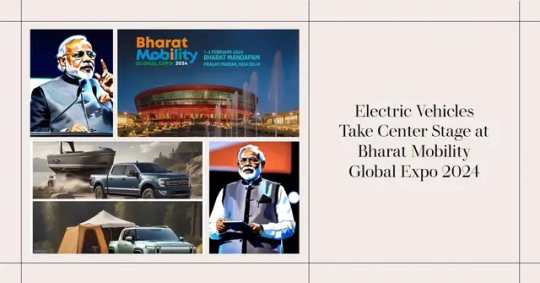
View On WordPress
#charging infrastructure#clean air#electric cars#electric vehicles#EV revolution#future of transportation#government incentives#India#Mahindra eVerito#Sustainability#Tata Nexon EV
0 notes
Text
Big Oil faces a tiny foe on the streets of Asia and Africa. The noisy, noxious vehicles that run on two and three wheels, carrying billions of people daily, are quietly going electric — in turn knocking down oil demand by one million barrels a day this year. ... The global majority doesn’t roll on four wheels. In Nairobi and Hanoi, motorcycles serve as taxis. In Mumbai, scooters can carry a family of four. In China, electric bicycles are how millions commute. “Electric bikes are quieter, much more efficient and good for the environment,” said Jesse Forrester, the founder of Mazi Mobility, which has 60 electric motorcycle taxis, known as boda-bodas, on the roads in Nairobi. “There’s a quiet revolution now in Kenya driving this transformation for the future.” .... In Darbhanga, a new acid-battery rickshaw, like the one Mr. Rai drives, sells for around 175,000 rupees, or $2,100. That’s half the price of a new rickshaw powered by natural gas. Charging the battery costs 20 rupees (25 cents), one-fourth of the price of filling a gas tank. The rebates seem to be working. Reliance Industries, India’s biggest company, is converting its three-wheeled cargo vehicles from gas to electric. Food delivery services are going electric as quickly as possible.
No paywall: https://web.archive.org/web/20231209105128/https://www.nytimes.com/2023/12/09/business/energy-environment/two-three-wheel-electric-vehicles.html
24 notes
·
View notes
Text
Top Battery Manufacturers in India: Powering Progress with ARM Power! 🔋⚡

India’s battery manufacturing industry is on the rise, driven by the growing demand for electric vehicles (EVs), renewable energy, and power backup solutions.
🌟 At ARM Power, we’re proud to contribute to India’s energy revolution, delivering cutting-edge solutions for a sustainable future.
✅ Top-Notch Quality ✅ Affordable Prices ✅ Reliable Performance ✅ Excellent Customer Support
🔋 Upgrade to ARM Power AGM batteries today and power your adventures! 🏢 Afghanistan, Dubai , Lenanon , Syria , Turkey and Nigeria 👉 Contact us today for more info and a free quote! 🎯 https://armpower.in/en/blogs/post/who-are-the-biggest-battery-manufacturers-in-india/ 📞 Contact us now +91 72173 33585 for a free consultation and find out how easy it is to go solar.
2 notes
·
View notes